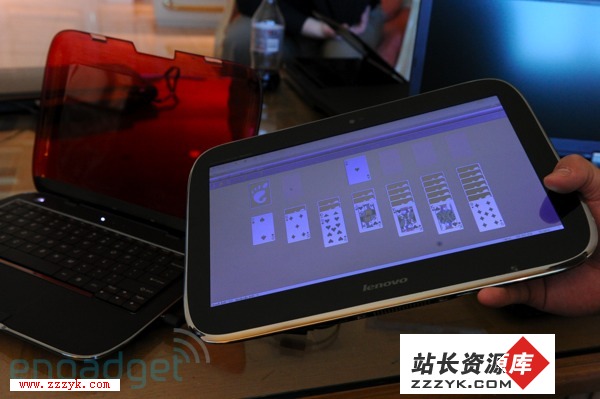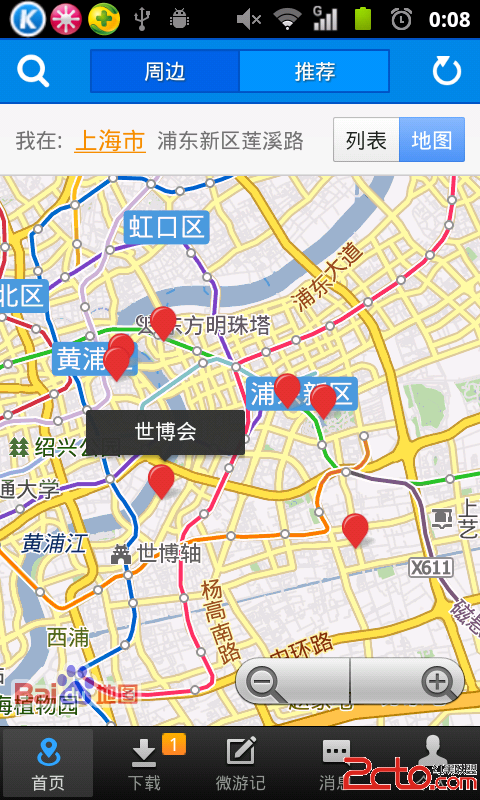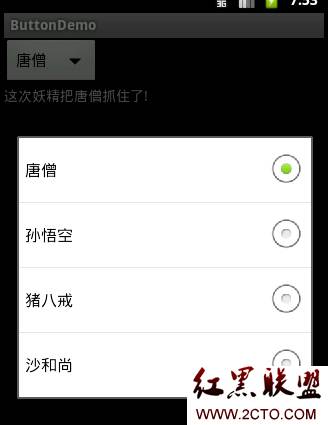Android美工坊--底部菜单栏实现
虽然网上有很多底部菜单栏的实现方式,但是实现方式各种各样,很多也不符合自己的口味,所以还是总结下底部菜单栏的实现方式,以便以后方便查询使用
实现方式一:通过TabWidget实现
这种方式主要是在布局中将TabWidget标签嵌套在RelativeLayout中,并且在TabWidget标签中中设置 android:layout_alignParentBottom="true"
另外,下划线和选项卡之间的线去除的方法时在TabWidget标签中设置属性android:tabStripEnabled="false"
main.xml
<?xml version="1.0" encoding="utf-8"?>
<TabHost xmlns:android="http://schemas.android.com/apk/res/android"
android:id="@android:id/tabhost"
android:layout_width="fill_parent"
android:layout_height="fill_parent"
android:orientation="vertical" >
<FrameLayout
android:id="@android:id/tabcontent"
android:layout_width="fill_parent"
android:layout_height="fill_parent"
android:padding="5dp"
></FrameLayout>
<RelativeLayout
android:layout_width="fill_parent"
android:layout_height="fill_parent">
<!-- tabStripEnabled属性去掉底部下划线与选项卡间的下划线 -->
<!-- layout_alignParentBottom属性即可将其放在底部菜单栏,注意,必须在RelativeLayout里 -->
<TabWidget
android:id="@android:id/tabs"
android:tabStripEnabled="false"
android:background="#6E6E6E"
android:layout_width="fill_parent"
android:layout_height="wrap_content"
android:layout_alignParentBottom="true"
></TabWidget>
</RelativeLayout>
</TabHost>
主要代码
package com.loulijun.demo1;
import android.app.TabActivity;
import android.content.Intent;
import android.os.Bundle;
import android.widget.TabHost;
public class Demo1Activity extends TabActivity {
/** Called when the activity is first created. */
private TabHost tabhost;
private Intent intent1, intent2, intent3, intent4;
@Override
public void onCreate(Bundle savedInstanceState) {
super.onCreate(savedInstanceState);
setContentView(R.layout.main);
tabhost = getTabHost();
intent1 = new Intent(Demo1Activity.this, One.class);
tabhost.addTab(tabhost.newTabSpec("one")
.setIndicator("电话",getResources().getDrawable(android.R.drawable.ic_menu_call))
.setContent(intent1));
intent2 = new Intent(Demo1Activity.this, Two.class);
tabhost.addTab(tabhost.newTabSpec("two")
.setIndicator("相机",getResources().getDrawable(android.R.drawable.ic_menu_camera))
.setContent(intent2));
intent3 = new Intent(Demo1Activity.this, Three.class);
tabhost.addTab(tabhost.newTabSpec("three")
.setIndicator("分享",getResources().getDrawable(android.R.drawable.ic_menu_share))
.setContent(intent3));
intent4 = new Intent(Demo1Activity.this, Four.class);
tabhost.addTab(tabhost.newTabSpec("four")
.setIndicator("更多",getResources().getDrawable(android.R.drawable.ic_menu_more))
.setContent(intent4));
}
}
运行效果如下:

实现方式二:隐藏TabWidget,通过RadioGroup和RadioButton实现底部菜单栏
这种方式更漂亮,网上基本用的是这种方式,通过setCurrentTabByTag来切换不同的选项卡
main.xml
<?xml version="1.0" encoding="utf-8"?>
<TabHost xmlns:android="http://schemas.android.com/apk/res/android"
android:id="@android:id/tabhost"
android:layout_width="fill_parent"
android:layout_height="fill_parent"
>
<LinearLayout
android:orientation="vertical"
android:layout_width="fill_parent"
android:layout_height="fill_parent">
<FrameLayout
android:id="@android:id/tabcontent"
android:layout_width="fill_parent"
android:layout_height="0.0dip"
android:layout_weight="1.0"/>
<TabWidget
android:id="@android:id/tabs"
android:layout_width="fill_parent"
补充:移动开发 , Android ,




